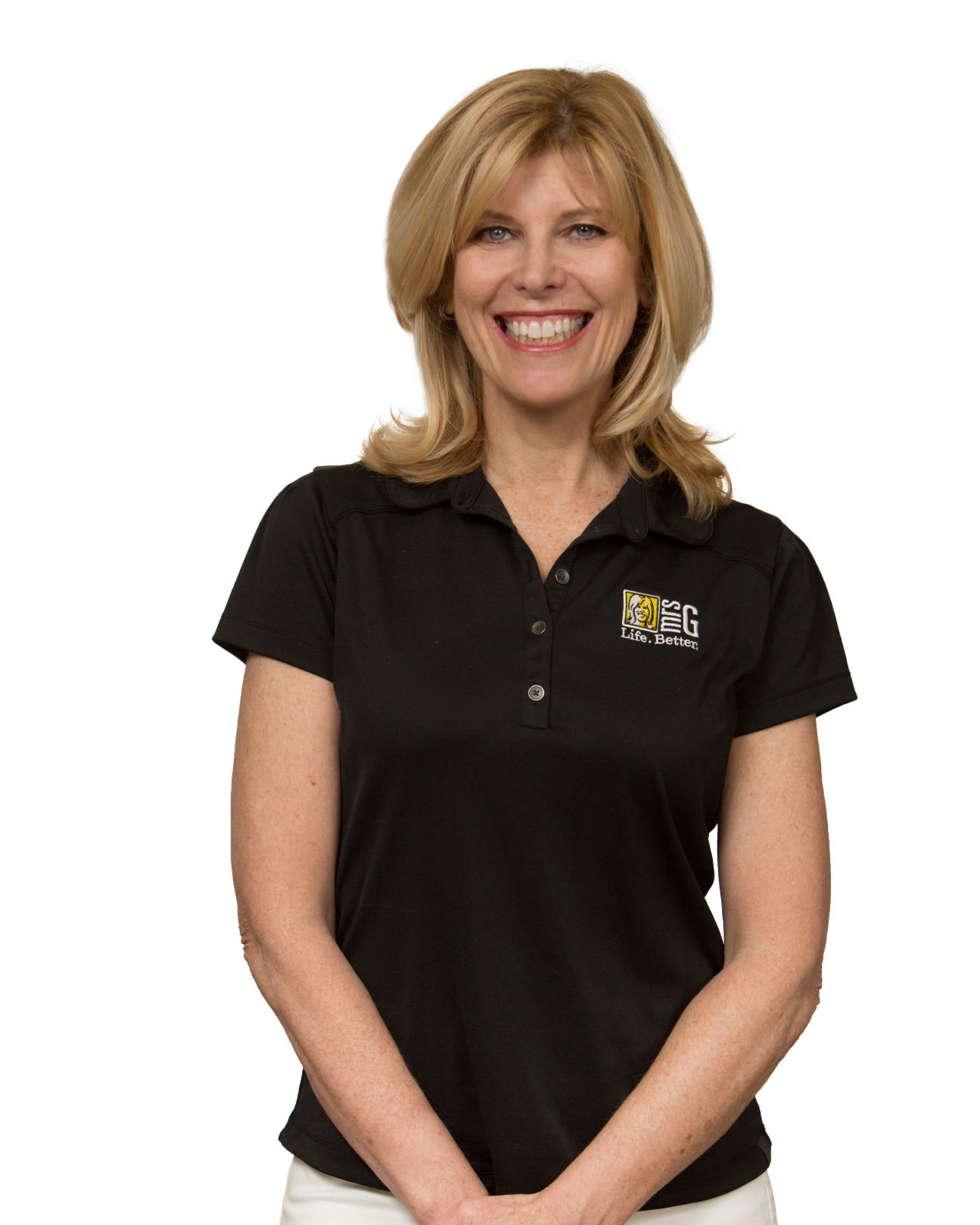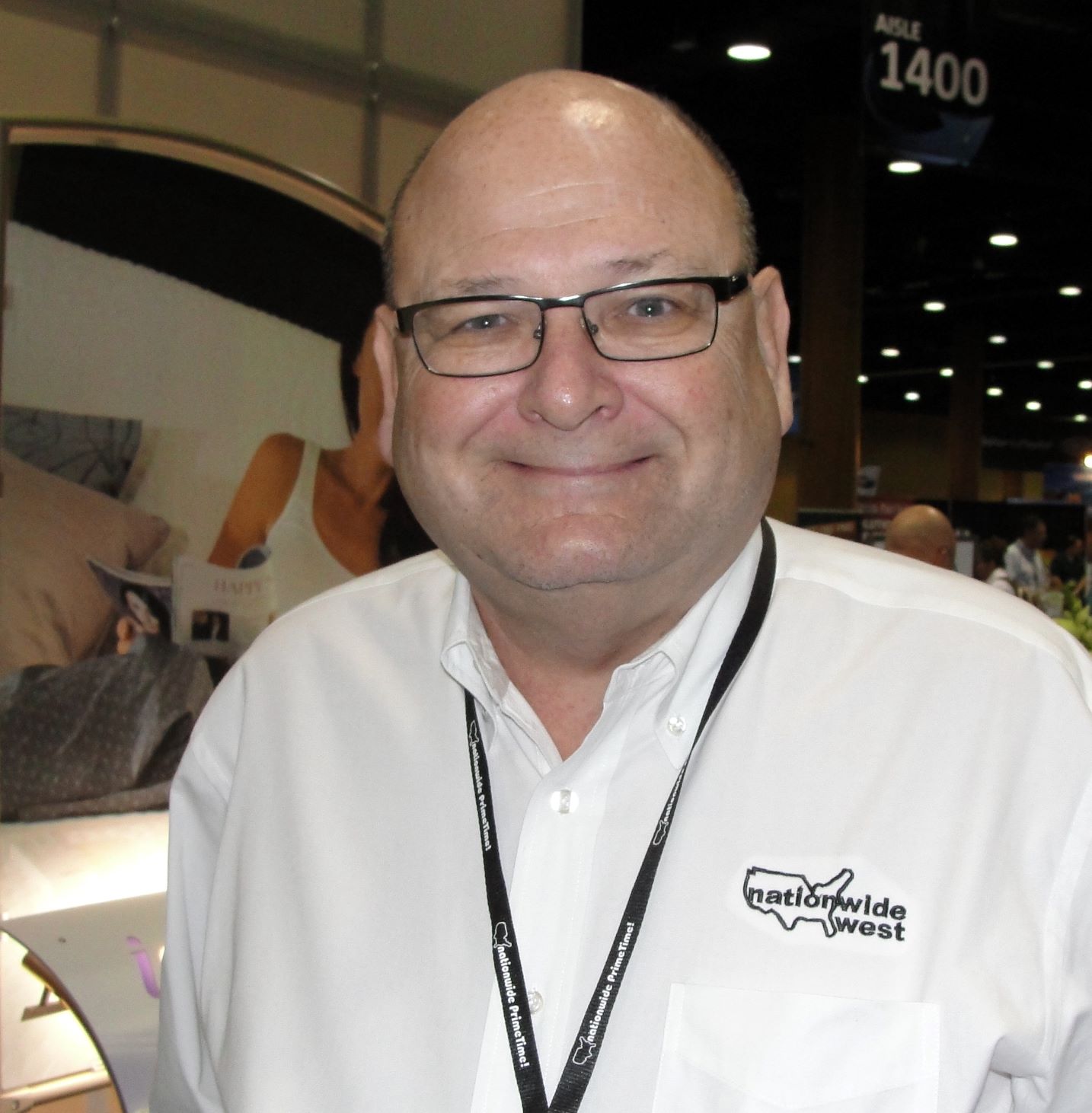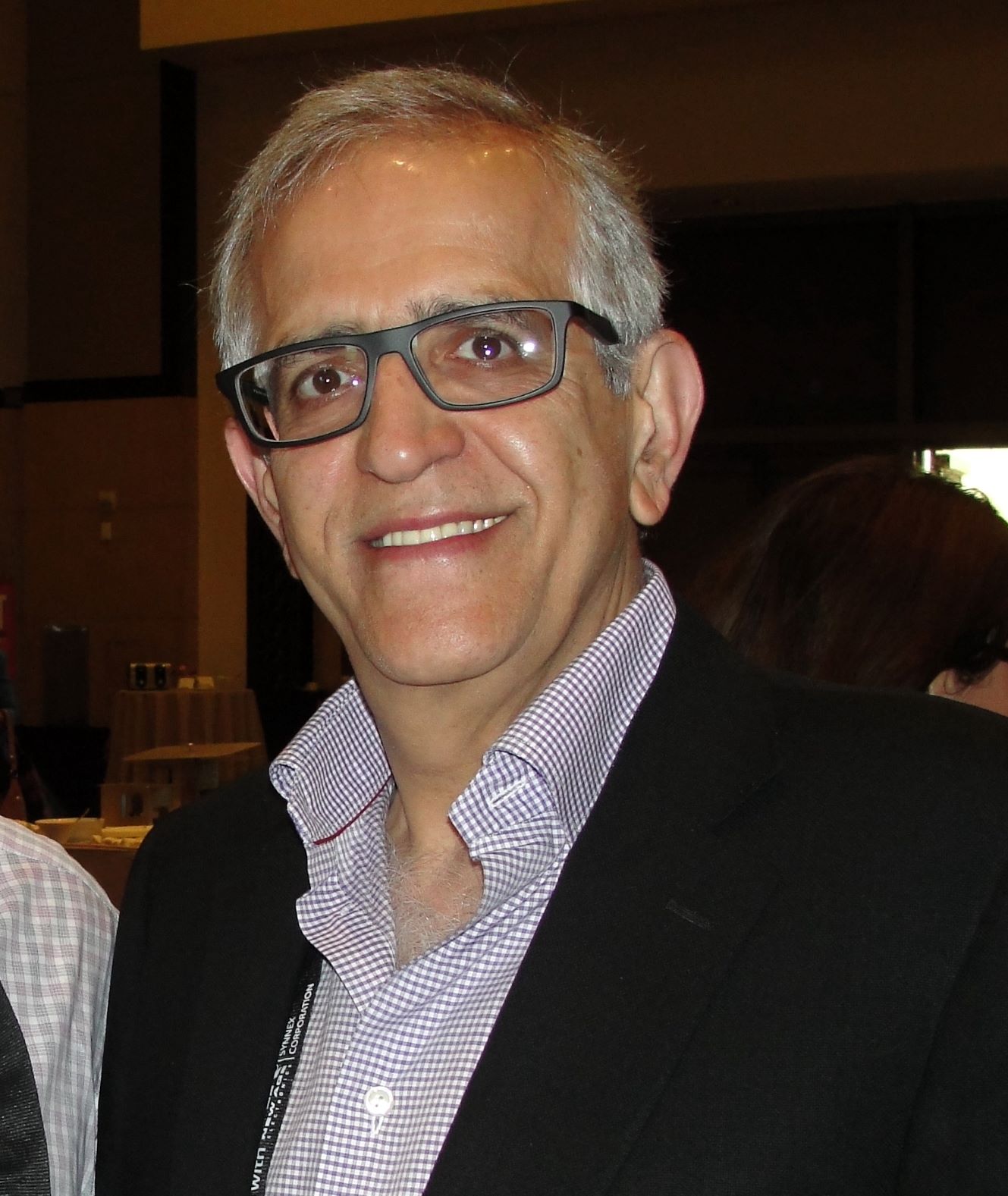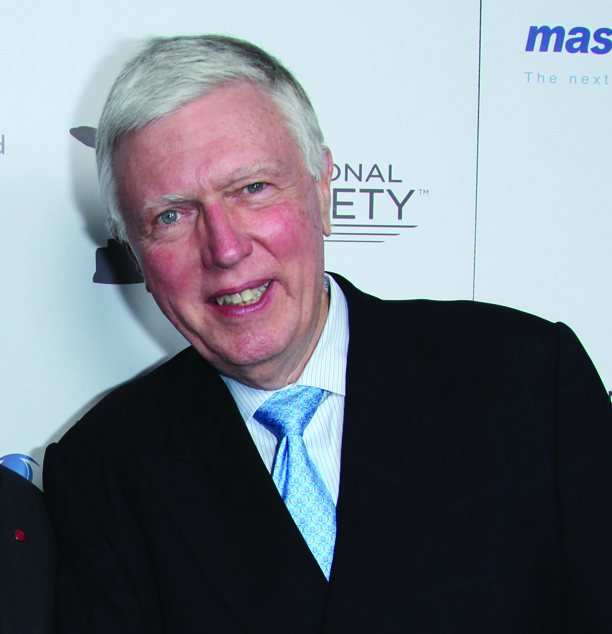The COVID pandemic’s impact on chip supplies has caused seismic shifts in inventories, but CE and appliance retailers are meeting these challenges with customary toughness and ingenuity
Dealerscope: How is the global chip supply shortage situation tracking these days relating to the consumer electronics and/or major appliances product categories? Which categories are hardest hit? What is the most disruptive aspect of this situation: product supply or product pricing hikes (or something else)? When do you expect the situation to improve — later this year, or not till 2022?
Jon Abt, Co-President, Abt Electronics & Appliances, Glenview, IL: It is getting rougher. Seems like each day, we hear news of it affecting a new product segment. Of course, it’s expected in consumer electronics like computers or smartphones. But now it’s causing shortages in everything from microwaves to dishwashers. So many appliances today are smart — there’s a computer chip in just about everything. Unfortunately, there’s no indication that it will improve any time soon. We’re hoping the constraints ease sometime this year, but info coming in keeps changing.
Tom Campbell, Chief Technologist, Video and Audio Center, Santa Monica, CA: There are a number of issues at play. When COVID first hit, our founder, Joseph Akhtarzad, thought there might develop a huge pent-up demand. So he opened up additional warehouses and we stocked up very heavily. So that’s helped us. But there have been shortages, for a couple of reasons. One is the demand on the chips – the automotive industry, as you know, uses a lot of chips. And sales of TVs and appliances have been way beyond expectations. So demand has driven chip prices up. And that’s affecting more of the entry-level products. Another thing is that we’ve been told that docks operations are looking for workers – there’s a shortage. In Long Beach [Calif.], at the ports, the containers have been stacked up sky high. So it’s not just the making of the products but it’s also getting them delivered. That’s been another challenge. So we’re telling people they should really be buying now, because we think prices will continue to go up for at least another year, at least until the chip shortages abate. There are more chip factories opening up to try getting ahead of the curve but it can’t be done overnight. We are getting product, but it’s a challenge.
Bob Cole, Founder/CEO, World Wide Stereo, Montgomeryville, PA: The chip shortage is a drag. To some degree, it affects us with receivers… Preamplifiers and music streamers were also affected.
A lot of it has to do with supply and demand, and the demand is so high, they can’t keep the supply up. My biggest concern is that it hinders innovation; they’re so busy trying to fill orders with the current stuff, there’s been a slowdown in new, innovative products, in my opinion. But then again, [vendors] find better, more efficient ways to manufacture.
COVID is a very big piece of [what’s coloring] this demand. On some level, the bar is lower – [consumers have been] almost used to not getting what they want [due to backorders and shortages], especially at the beginning. It was really hard to get product, and everything was slow. People may have wanted a particular product, but we didn’t have it and they asked, ‘Well, what do you have?’ and they bought it. In many cases, that was great for us, because we sold a lot of stuff on hand. Someone wants to spend $500 or $600 for a receiver, and you don’t have anything under $1,000 — and they take it.
I think [supply] will be better by the holidays, or maybe not till next year. I believe demand will continue to be very high — it hasn’t been high like this since the ’80s.
Eden Goldberg, Vice President, Marketing & Business Development, InMotion Entertainment Group, Las Vegas, NV: We are seeing some product launch delays in terms of supply, and a couple of partners have spoken of possible price increases.

Eddie Maloney, President, Cowboy Maloney’s, Jackson, MS: It’s affecting both CE and appliances. Everybody sees it, and knows there’s a shortage of product. We have people come in, and they say that some places they’ve gone, they didn’t have anything to sell. These are big boxes. The chip shortages affect a lot of things. Even though most of your major [appliance] brands are made in the U.S., they depend on chips and parts from all over the world, and when that supply is hurt, they get hurt.
One thing that’s changed for us [with buying] is that we don’t call up and ask for a specific model; we call up and ask for categories. And when product categories become available, we purchase them, even though we may already have a decent supply. At least in the last 14 or 15 months, we’ve been taking most everything the manufacturers have. There are some positive sides to it, as far as our company goes — and probably for a lot of other mid-sized retailers. Your big-box stores are focusing more on [allocating for] their bigger locations — not on Mississippi… So we’ve been very fortunate to be able to have more inventory for sale than the big boxes. The other thing is, with manufacturers having a hard time supplying merchandise and the big boxes having a hard time [getting] merchandise, we’ve seen a stabilization on pricing — nobody’s out there promoting the deep discounts which our industry is known for, because there’s no reason to discount things you can’t get [enough of]. If I can deliver it today, and they can’t deliver it for two months, I don’t care what they’re selling it for…
I’ve been in this business, now, for 50 years, and at Cowboy Maloney’s, next year will be our 70th year. As for the last 18 months, I’ve never seen anything like this, ever. But it looks like it’s getting better; there are signs of that, after its having started in April or May a year ago. But I think it will be 2022 before things catch up… We’ve always advertised models and price, but now, we’re advertising that we have inventory. We’re advertising our terms and that we’re getting inventory every day, but we can’t go specific on products, because by the time the customer comes in, we may be out of it.
It’s more broad promotion.
Ron Romero, Schaefer’s TV & Appliance, Lincoln, NE: The chip shortage has just devastated the appliance industry with availability. We have so many products on backorder. I had a semi truckload of washers ordered for some time and I was told they’re sitting here, ready to go, as soon as they find the chips to put into them. That’s just one example. Everywhere I turn, most of our products, be they electronics or appliances, have some sort of chip issue. We have an appliance repair department, so to compound that, is parts availability — we’re struggling to get parts. If someone bought a washer six months ago and their control board goes out, we’re having a heck of a time finding one.
We have been getting stuff in, but not nearly what we need. Personally, I think it will take well into next year [to resolve], and I don’t know what it will take for [chip] manufacturers to gear up; they make semiconductors for so many industries, so who will get priority? Couple that with anything we’re buying from overseas in containers is slowing up, because of the containers shortage and a backup at the ports. It’s been a struggle. For independents like us, we’re doing what we can to buy what we can and are trying what we can. The technologies today lean so heavily on microchips that everyone’s being affected. It could be a low-end appliance to a high-end one. Compound that with the backup at the ports, and it’s really a juggling act.

Debbie Schaeffer, CEO, Mrs. G Appliances, Lawrence Township, NJ: We don’t usually talk about [appliance] chip shortages in our industry, but I wrote a blog recently that sums it up. I call it the perfect storm — delays in the production lines, delays in parts, the containers shortage – I am hearing more about the container shortage than the chip shortage. Not only container shortages, but the cost of containers has just skyrocketed. And as for what did get into containers, there’s more time spent waiting to get it into the ports. It’s a domino effect, and it’s still ongoing. Honestly, it may still get a little worse as demand increases due to consumers’ pent-up purchasing desires. People are realizing there is a shortage; before, consumers didn’t, and they’re thinking, ‘My washer hasn’t been working really well and normally, I’d wait till it dies, but I’ve heard about shortages, so I’d better order it now in case it won’t be available when I need it.’ It’s almost like a pre-replacement-cycle purchase. If your washer goes, you would normally replace it in a day or two. How can you do that if you want a particular model and size — and especially, if you want a washer/dryer pair that matches?
My blog recommends that consumers become knowledgeable about what’s going on, do their research early, and make those decisions, and not wait till the last minute. It’s the same for the kitchen as for the laundry room. We don’t know how long this will go on. It has been a challenge knowing when products will be available; it’s across brands and categories of products.
Aaron Sholtis, CEO, HiDEF Lifestyle, Harrisburg, PA: Product demand has been outpacing supply for all of 2021 in audio, furniture, and networking. Chip shortages are the primary factor in audio and networking, while demand and COVID restrictions are also factors.
Sam Yazdian, President, Electronic Express, Nashville, TN: The chip shortage is affecting everyone in our category. Appliances have really been hit hardest. Computers and gaming products are affected as well, and right now, the ETA (estimated time of arrival) for some appliances is 2022.
Every aspect of business is affected — even small appliances like coffee makers. All of them have chip sets in them, and when manufacturers can’t get them, they can’t make the products. You can’t really put your finger on any one category. Then, there are the supply-chain issues, on top of chip shortages. Every product being imported is impacted because there aren’t enough truck drivers to bring them from the ports. For some products coming from overseas and China, there are not even containers available to load them into. Something is always affecting something else. It’s going to take some time for the supply chain to get back to normal. I think by mid-2022, hopefully, it will be resolved.
Dealerscope: Now that we seem to be moving into a post-COVID mode in the country, are you seeing any additional shifts in consumer purchasing behaviors – both in the types of products they are now gravitating to, and in their choice of how to shop for them (is there still a gravitation to online purchasing as opposed to coming into stores)?
Maloney: It’s amazing. We’re picking up a lot of customers now because we have had merchandise that other people haven’t. But the other area of our business that is just unbelievable is new-home construction and remodel. Those products are backed up months and months, because everybody hanging around their houses [during COVID] had decided they either wanted to move or re-do their kitchens. In certain product categories, we may be six months out [on availability]. And that’s never happened in my years in this business. Being a month out would be a long time in our business… I have people calling to order specific refrigerator models, and I can’t help them. But we have been very fortunate that our building and remodeling business [categories] have been great, and we’re doing probably a better job of getting merchandised than most, but we’re still behind, with a lot of merchandise still “on order.”
But you know, people are not spending money on travel, on restaurants, and not spending disposable income on things they’re used to spending it on — they have more money than in years, and also the government [stimulus] help. I have good friends in the car business and they’re having trouble keeping cars in stock. There is a lot of money out there. I hope and believe it’s getting better.

Romero: Buying has spiked online; we’re noticing [a spike] here locally as well. During the pandemic, people just didn’t want to go out and shop, so they went to online. We have an online chat set up, and that was pretty seamless. But now, compound that with availability issues, you really need to talk to the customer to find out what their real needs are so that you can see what you have that will work for them. You have to say what you have in the range of what they need. Online business during the pandemic helped, and honestly, our business was up during that time. So we didn’t see any downturn – in fact, we saw a spike. People were buying appliances and TVs and wanted to upgrade their kitchens and laundry rooms, and were cooking more, so were more apt to shop and buy, and that’s still the case. There’s pent-up demand, but we have just so many products. It’s very challenging.
We’re a heavily promotional company, so to put together a price-point ad is almost impossible, because you may not have enough of this or of that. So we have to get very creative on how we are promoting, and get away from promoting the price, and rather, promote the features, benefits and advantages of shopping with our company. Price-point advertising is on hold right now. Also, for example, in stock now, we have a good inventory of washers across brands. But when it comes to dryers, we’re limited. And that’s across the board as well. So to advertise a washer/dryer pair is really hard to do. We have a lot on backorder right now, and we do have a good inventory, but the mix is thrown off.
Schaeffer: No question [that there are shifts]. When COVID happened, everybody wanted a freezer – you couldn’t find one for the longest time because customers were all staying home, cooking more, and needed the extra food storage capability because they didn’t want to shop that often at the grocery store. For us, now, they are available, but what might be available to us may not be available in other parts of the country. What we’re seeing here [in Central New Jersey] is that people hadn’t been eating out or traveling, and had been saving their money during COVID. And a lot of these customers have a great deal of equity in their homes. With the lower interest rates available to them, they can pull out that equity and make improvements and renovations. They’re doing new kitchens, doing new laundry rooms, doing outdoor kitchens — and they’re letting workers back into their houses. A lot are coming in, in the last couple of months. During the height of COVID, it was all about replacement appliances. New construction stopped, the wholesale business slowed, but replacement business still went on. Now, there’s still replacement, but I feel that because of pent-up feelings and extra available savings, people are spending. They are re-doing kitchens, laundry rooms — and even fixing up a really nice home office. Under-counter refrigerators, coffee-making systems and microwave drawers are going into those home offices.
By replacing a four-piece appliances package in a kitchen without even replacing the cabinets or countertops sometimes makes the kitchen look brand new. I always tell people to wait a bit before considering changing countertops and cabinets until you do the appliances.
Campbell: To some degree there are shifts. Streaming is red hot. And because of that, consumers now want the bigger TV screens. And even though prices have gone up in some instances, you can still get an 85-inch television now for a very reasonable price, where before you had to spend anywhere from $12,000 to $15,000. The other thing is features – sets are edge-to-edge pictures, almost without a bezel, and speakers are built into the screen, or you use a soundbar. So you can put a 75-inch in the same space were you had a 65-inch — the starting sizes for the main viewing areas in the home are becoming larger than ever for buyers.

Yazdian: It works both ways. Customers shop digitally online, and if you have the merchandise they pick it up or it’s delivered. Now people have been buying the larger TVs during the pandemic because they are home and want a better viewing experience. For the time being, that should continue. To see when behaviors will be back to normal, it may depend upon the part of the country you are looking at, and the degree to which people are vaccinated in each area, and when things open up. It all depends on the industry you’re in; working from home is great for some industries, and not for others.
In our brick-and-mortar business, we’ve seen the traffic pick up. We keep promoting buy online, pick up in store (BOPIS). If they don’t want to pick it up, we deliver. I think this trend will continue because of the ease of the shopping experience, like for smaller items that they can buy online, and it is a way around having to pick up certain merchandise. If it’s a larger item, they will probably come to the brick-and-mortar stores. We have customers that go online, do their homework, narrow down what they want, and when they come here, it’s a faster, easier transaction. A lot of it also depends, too, on what you have in stock.
Outdoor-related products have been really good [sellers] — things like outdoor speakers, because everyone’s been confined to their homes. Also, things like projectors and outdoor screens have done well, for movie nights with neighbors, and also grilles and things like that.
Sholtis: Store traffic is up, but online and installation are far eclipsing retail sales. All products for the home are selling extremely fast — especially theater, audio, networking, and office furniture. We expect light commercial to pick up in the third and fourth quarters, as people continue to return to their offices, etc.
What else happened was that people discovered that being at home with family can be pretty nice. The whole ‘man cave’ thing — I hate that term — evaporated, and it became about the family. It was one reason we’ve been so successful.
Cole: Some things occurred with COVID. People learned how to be Millennials – learned how to buy online, which was great for ecommerce, which is really the velocity of our industry these days. The other part is, people my age also realized the frustrations of buying online.
People were digging into their homes and realizing they needed a better network, which accounted for a huge rise in our business. They were staying home, weren’t going out to dinner or on vacation, so their budget was higher and it was almost, ‘I don’t care what it costs.’ And there was always a sense of urgency, which was a problem – ‘I want that theater next week.’

I feel good about that — and it was one of the factors I’d been looking at very closely this year. Two years ago wasn’t the best year for World Wide Stereo [due to Amazon]. But last year, when COVID hit, business went through the roof. Even when we closed the stores for six weeks, I had four retail sales staff who refused to be furloughed; they said we’ll just call people. And they did Christmas numbers. And people were thrilled when they got the call, for the most part – a common response. They perceived the call as thoughtful – ‘Indeed, I can do with two more TVs, and the kids are home and we need a better network…’ It was a shopping list.
I think that’s a COVID triumph. And I don’t see that going away that quickly.
With our online chat, one of our guys handling that averaged $20,000 in sales a day, on his day off, just chatting and working his phone. In fact, one of his customers who wanted a TV and asked how to make it sound better ended up buying a $120,000 theater — [sold] on his phone, from a chair. There was that discovery, you know.
People always just want an excuse to buy a Ferrari, if they can possibly afford it — that’s what I always tell my sales guys. But in lieu of a Ferrari, make them feel like they’re buying a Ferrari!
Abt: People continue to buy in record numbers. Early on in the pandemic, there was a dramatic spike in the obvious categories: technology for working from home, bread makers, air purifiers. But in the last 12 months, we’ve seen increases in almost every product category. Appliances continued to perform well over the summer. And we’re now seeing a nice lift in categories that were all but decimated last year, like luggage.
And in-store shopping is more or less back to pre-pandemic levels. With Illinois now fully opened, we’ve restarted many of the in-store experiences that were closed all last year. Cooking demos, fresh-baked chocolate chip cookies on the weekends, interactive displays for kids, things like that.
Goldberg: Thankfully, there is a strong desire for travel, and the airports and resorts are bustling. We are catering more to leisure travelers as well as travelers’ intent to work from anywhere. The needs have evolved and the solutions we provide are therefore adjusted. We are always intent on being a solution for any traveler, and now we offer bundled solutions customized for each traveler.
Dealerscope: Which aspects of the business booms that manifested themselves due to working-from-home behaviors during COVID will continue past the COVID crisis (i.e., increased large screen TV sales, etc.)? Which do you think won’t continue?

Cole: I do believe this will continue — 2020 was up significantly over 2019. We’re busy in all categories, online. And in our custom integration business, we’re [very busy and] telling people we can’t install their system till September. But what we’ve noticed is that people, rather than running out and trying to find someone else not as good, are happy to wait for a premium experience. I don’t see that going away — nor do I see any of this boost in business going away before maybe next spring, if it ever goes away.
Abt: We believe that appliances will continue to flourish. Home gym sales are still strong. I don’t think that everyone wants to go back to the gym yet, whether for safety issues or because they’ve come to prefer the convenience of working out at home. Home office continues to be strong, as WFH [working from home] has become a permanent option for many. One notable slowdown is freezers. I don’t think consumers are worried that they need to hoard food anymore.
Sholtis: We expect that purchases for staycations and improving home networks will continue to grow, long term. Online and custom installation will continue to be strong as well. TVs over 80 inches will continue to be our biggest seller, but we don’t believe they will continue to grow past that size. Renewed interest in projectors and especially short-throw projectors will continue into 2022 and beyond.
Dealerscope: Do you expect the stay-at-home work habits could revert to pre-COVID work patterns/habits? Or will it be a mix of the two, as something unique and born out of the “new normal”?
Maloney: I think it will be a mix. We’re looking forward to having our [buying group] meeting in September… everybody wants to get back out and see people and talk to them, and network with other members and find out what’s going on with them, but it could be a lot more online meetings.
Sholtis: We believe it will certainly be a mix of the two. Someone wise said that major events in society, like COVID, typically don’t change the trends in commerce, they only accelerate them. Working remotely was a trend well before COVID hit, and I expect it was only exaggerated by the effects of the pandemic. Businesses and employees have learned, adapted and have become comfortable with the new normal of working remotely when possible.
Yazdian: I think these behaviors will continue this year, supported by stimulus money and tax credits consumers are getting. Then it will go back to more normal behaviors in late 2021 and early 2022. They are doing financing, but at some point, they will exhaust these avenues. People have been reinvesting in their homes. That’s one of the reasons major appliances and TVs are selling so well — and also part of the reason for some backorder situations. It’s been a bit of a domino effect. Also, there are a lot of new homes being built in our area, and new apartments – and hopefully, whoever moves there will want to buy a TV.
Cole: We have changed the way we do business. And a lot of other dealers have changed how they do business. Some dealers just ramped up for the higher velocity, but there are other dealers — and I count myself as one of them — who changed how they do business altogether. All of a sudden, my in-store folks realized the value of being outside — and the showroom has become less relevant as a general selling agent, but more relevant for higher-end equipment. It’s evolved.
The other thing [born of this situation] is hybrid operation. We have people who are very effective working from home. Now that COVID is ending we have people who still want to work from home maybe three or four days a week. Right now, in fact, I have an installer working on a major job who has the racks for the job in his house.
We had been doing site visits. Now, we will sometimes FaceTime the customer who will walk around the house and show us what the home looks like, and where things could go. Not only does it save long car drives; it’s an hour-long experience, and the customer feels very engaged — the customer feels more responsible. Some are still doing that. It’s not true of everybody, but it was true of many.

Goldberg: A hybrid of work styles will be the new normal.
Schaeffer: It will probably be a mix. I have customer service and IT employees who have been working from home, and have asked them to come back. We set them up and they did a great job working from home, but we miss them for that one extra step — of getting on the phone, making that call, sending that email — of having that relationship when they’re in the store. For me, I find it difficult to be in front of a small screen. It’s one thing, to be typing and writing, but to talk to somebody on a screen is difficult.
Our online business did go up during COVID, but online business with appliances is challenging anyway. Even pre-COVID, most online still has to be followed up with a phone call to ask certain questions. If customers buy a refrigerator online, you can’t just assume that it’s going to fit. A lot of customers don’t know exactly what to measure, and even though they place an order online for that, or for an over-the-range microwave, we really don’t process that payment until after we’ve spoken directly to the customer and asked a few questions to make sure that they’ve addressed all the right points and that that’s the right product for them. I would think most dealers would want to ask these questions.
Qualifying the customer is so important. And that’s the wonderful thing about a small, independent business like us. We’re extremely knowledgeable about those things, and because we are, we don’t have a lot of returns. It’s follow-through, and high-touch retailing.
Campbell: There are people who are looking forward to returning to the social interaction of working in an office, and others who do prefer working at home. But there’s no question that the TV today is essential – for security, home office, streaming, social networking, gaming. It’s beyond entertainment; it’s an essential communications device. And the world won’t go back to what it used to be. Some people have two or three jobs and for them, it’s about maximizing their at-home time.
Our Just One Touch custom installation division has been having another record year. More and more people are having us build home theaters, and adding things like movie theater chairs. And the smart appliances category, a newer one for us, is also doing well — refrigerators with interior cameras, washers and dryers can turn on or off automatically to take advantage of lower electrical power rates. What’s really selling through the roof, though, are the 4K and 8K smart TVs, with streaming being a huge component of that.
Abt: That will of course depend on where they work. Some will take a hybrid approach, and others will never return back to the office. So overall, I think mixed work habits will be a new normal. But I think most retailers will continue to work in-store.
Romero: I think that it will continue. People got used to working at home. It is the ‘new normal.’ I personally can do everything from my home office that I can do from my store office.
Dealerscope: Looking at the future, what is your business shaping up to be in 2022? Will it look similar to late-2019/early-2020 (pre-COVID) times, or will it turn into something completely unique, shaped by the challenges of COVID times?
Abt: 2021 will be another up year for our business. It won’t be as strong as 2020, but it will be up double digits. We’re not yet sure what will happen in 2022. We hope to continue strongly but it will really depend on the supply chain and other unforeseeable issues that may arise.

Campbell: We think that in 2022, consumers will continue looking for meaningful new technology. In TVs, it’s thinner, more beautiful screens, wall-mounted TVs, and with the newer 8K and 4K models, they can sit much closer to the sets for a crystal-clear viewing experience.
It’s a technology statement for them. And another thing – technology has become a statement of affluence for consumers. It used to be about what kind of clothes you wore; then it was about what kind of car you drove. Today, it’s about technology — what kind of smartphone you have… people notice that. And high-end TVs are the Rolls Royces.
Goldberg: We are experiencing strong sales across our stores and are fortunate to open new locations during this time, drawing immediate successes.
Maloney: In my opinion, I don’t think it will revert to exactly the way it was, but it will start getting back to the way it was. People interaction is still very important in most businesses, but especially in our business.
Romero: I think the way things are going now, next year will be pretty much the same, unless availability gets better – which it has to at some point. I know dealers who’ve decided to close their doors because they didn’t want to deal with this — smaller “mom-and-pops” who had successful businesses but were getting ready to retire anyhow and said enough’s enough… At this time, it’s a good idea to be diverse in what [brands] you carry.
Schaeffer: I think all of us [dealers] are having issues relating to the management of current inventory. When customers buy a four-piece appliance package, and we get the three pieces in but are still waiting for the fourth piece, customers don’t want it till it’s all available together — and all of a sudden, you’re in the storage business! We’ve never really been challenged by that before. We always knew we could get these pieces when we needed them, so we managed the timing of our inventory properly. We had it in when we needed it for the customer, and delivered it in a timely manner. Now, it’s for us to manage that to where you know you’re going to get it, and then being able to match it to when that customer needs it. It is a real challenge. Customers aren’t in the storage business, either.
And here’s the tricky part: we need to get it out of the warehouse, the customer’s not ready for it, they want to put it in the garage. We need to open those pieces and make sure there are no damages at that time; you can’t open it up a month later and see the damage then. Especially for the single-store retailer with a decent-sized warehouse, managing sold inventory [is a real challenge]. How do you do that? Do you need to make three deliveries to the customer? It’s complicated.

Sholtis: I believe it will be completely different only in that the world stimulus packages will be playing out in economies. This is already affecting pricing and inflation in a major way. Demand will be cooled by rising prices and product supply will obviously rebound. We are expecting this to make 2022 a challenging year, as companies get aggressive trying to comp some of their best years on record financially.
Yazdian: Honestly, it depends on how far the stimulus money goes, how far the unemployment benefits extend. It has to stop at some point, when people are back to normal.
Plus, now that things are opening back up, you are competing with travel, and with the entertainment and sporting event categories, as people are getting back out — and also with restaurants. For a year and half, people didn’t travel and had more disposable income to spend on their homes. They didn’t go out to eat, or to concerts. They spent on their homes and on remodeling. That is what fueled all this until now. But now, will people need to remodel their kitchen again? Probably not. I think it will level off, because there are more choices opening up where they can spend their money.
Dealerscope: Is there anything we have not touched on that you’d care to comment on that would be specific about business initiatives or strategies you’re planning for the second half of 2021, and moving into 2022?
Campbell: We have a customer hotline they can call. People get “keystroke-itis,” with all the typing to research technology products. This way, they can interact with a live person and shop our store online and not have to touch a keyboard; you can talk to somebody on the phone and you can actually show them. We offer free setup on many of our sets as well, which most of the online companies can’t do. We’ve also been very pleased about the success of smart appliances. We stock and show refrigerators that are tied to the Internet, and of course, the smart washers and dryers.
Especially with COVID, people are more reliant than ever on technology in their everyday lives. The outlook is bright, and the challenge right now is getting enough chip-based product to meet the demand.
Cole: Lots of people have gotten more serious. ProSource during this time took the opportunity to really develop their ProSource University, for example. There’s more about becoming a lot more professional, and about things related to training, which I think was opportune, and I was really pleased with how many people responded to it, including us. I would have told you we have our own training initiatives, but it’s been a good thing. And [other groups are] making that same investment in professionalism.
A concern is manufacturers becoming conglomerates — there are advantages to that but also disadvantages. The thing that’s always wonderful about the free market is competition, and that can dilute it. So we’ll see what becomes of that.
One thing successful CEOs all have in common is being paranoid — never comfortable, and always thinking things are going to go to hell in a handcart. Over my forty-some years in this business, there were maybe five years of feeling comfortable. I feel that way now — comfortable, with our industry and with the business.
Maloney: We still have pretty much open orders with the manufacturers.
One interesting thing happened last March and April, when it was hard to get anything, and the trucking companies shut down, and the manufacturers shut down their plants; it was hard to get any merchandise from manufacturers. But we were able to sell over $1.5 million in distressed inventory — because people had to have it, even if it had a nick or a dent on it. And we had some things like that, and were able to move a great deal of distressed inventory then, which helped our profit and loss. We discounted the products but we didn’t have to discount it as much.
I’m very optimistic [for the rest of the year] because of the position we’re in right now. We’re focused on Mississippi, and our competitors are focused nationwide. All of our strengths are right here, and we’re taking care of our neighbors. It’s been very, very interesting, and for the most part, people have been very understanding. It’s been a strange new world out there, but I think in 2022, we’ll get back closer to normal…
Romero: We’re planning on business as usual. We’re planning for growth; we’ve done things in our store – upgraded some of our big, massive displays, and are in the process of re-doing our Wolf/Sub-Zero department, and have upgraded several kitchens to better showcase products. We’re continuing to invest in our business; business won’t go away. There are shoppers out there, and you want to give them the best shopping experience that you can.
We closed our retail floor for two weeks right at the start of the pandemic but continued to operate online. This was when the mayor was telling everyone to stay home. During that time, we worked on putting protective Plexiglas up, and on sanitizing areas, and we remodeled a little bit.
We’re not putting our heads in the sand; this, too, will pass. We’re looking at it aggressively — and I’m excited about the future. There will be plenty of opportunities. We are getting products; my inventory is strong. When the pandemic started I was just in the midst of building on a warehouse, and I thought, oh my gosh, what am I doing? But I’m glad I did it because it’s full… It’s just a different way of doing business. We have the space to warehouse now, and lots of dealers don’t have that luxury.
Schaeffer: The key for us is to constantly promote and keep our brand trust solid.
That means, when a customer comes in and they want a particular model, we tell them they need to be patient right now – and, most important, we tell them we’re going to keep them in the loop, and then we keep them informed. They still want to hear from you, even if you don’t have any news about availability.
We’re seeing more people who we’ve told they may need to wait for their product, who have then gone to another store and been given a date for an order placed there, at the other store, and then that store misses the date — and then they come back to us to place the order. They come back because they felt they lost the trust of the other store.
We let them know we’re checking on their item, and let them know if we have information when we really do know something – and that we’re on it. We do our best to be proactive and call them and connect with them and say we’re keeping an eye on it. It builds on our trust with them.
Sholtis: We are extremely excited about the shift generationally in purchasing power as Gen Z enters the workforce and Millennials continue their prominence. I expect this will continue to change how we go to market and reach our audiences. Social shopping trends will be our main focus for the coming years.
Yazdian: We will keep promoting and maintaining the best customer service we can offer, to take share from the big-box stores. We also always review different categories to see what we can add to our mix. Our buyers are always looking and researching. We have to keep the customers we have, and with additional categories, hopefully by doing that, they’ll keep on visiting our stores more often, and keep our sales up. It’s also important to have step-up merchandise. For example, with the small appliances we sell, we are not trying to compete with Walmart or Target; we sell the step-up brands.
We are always optimistic. And last year, during COVID, we opened two new locations – one in Chattanooga in a former Toys R Us building, and then we opened an outlet store in Nashville’s Opry Mills Mall. And we are always looking for when an opportunity comes along.
Summary Box:
- While the pandemic triggered incredible sales booms in most CE and appliance product categories over the past 18 months, the global chip shortage is making it harder for dealers to replenish inventory supplies across the board to meet consumers’ unwavering demand.
- Shortages of chips and parts, being compounded by a shortage of labor at the ports of entry, have created a perfect storm, impeding the supply chain flow, retailers report.
- Retailers who say they stocked up on whatever products they could secure early on in the COVID curve are finding themselves in a better position today to navigate the chip shortage — at least for the near term.

Nancy is a contributing editor for Dealerscope.















